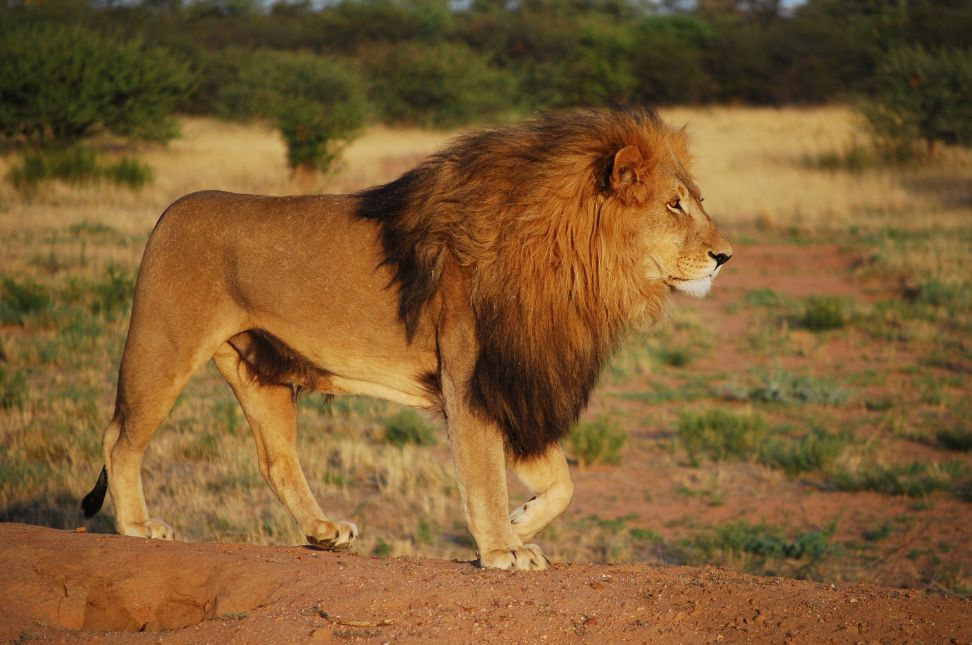Nestled in the western part of India, Gir National Park is the only place in the world where you can find the majestic Asiatic lions. Located in Gujarat, this park stands as a symbol of India’s rich biodiversity and wildlife conservation efforts. Spread over 1,412 square kilometers, the park provides a safe haven for numerous species of flora and fauna, but the star attraction remains the Asiatic lion, a species once on the brink of extinction.
A Brief History of Gir National Park
The story of Gir National Park is one of remarkable conservation success. During the early 20th century, hunting and habitat destruction had severely threatened the lion population. By the 1900s, the Asiatic lion was almost wiped out, with only about 20 lions left in the region. The Nawab of Junagadh, a local ruler, took the first steps to protect these lions, banning hunting and setting aside land for their preservation.
The park officially became a protected area in 1965, and since then, conservation efforts have intensified. Thanks to these sustained efforts, the lion population has rebounded significantly. Today, there are over 600 lions living in Gir National Park, making it one of the most successful wildlife recovery stories in India.
The Wildlife of Gir National Park
While the Asiatic lion is undoubtedly the crown jewel, Gir National Park is home to a diverse range of species. The park boasts a rich variety of mammals, reptiles, birds, and plants. Here are some of the key species you can encounter:
- Mammals: Apart from the Asiatic lion, Gir is home to leopards, jungle cats, hyenas, and jackals. The park also supports a healthy population of herbivores like sambar deer, chital (spotted deer), nilgai (blue bull), and wild boars.
- Birds: Birdwatchers will find Gir National Park a paradise. With over 300 species of birds, including the crested serpent eagle, Indian eagle-owl, and the endangered Indian vulture, the park is a must-visit for ornithologists.
- Reptiles: Reptile lovers can spot several species of snakes, crocodiles, and monitor lizards. The Kamleshwar Dam within the park serves as a crucial habitat for marsh crocodiles, offering visitors a chance to observe these fascinating creatures.
- Flora: The park’s landscape is a mix of dry deciduous forests, thorny scrublands, and grasslands. Teak, acacia, and banyan trees are among the dominant species, offering the perfect environment for the park’s wildlife.
The Asiatic Lion: A Unique Subspecies
The Asiatic lion, or Panthera leo persica, differs slightly from its African cousins. While both species share similar traits, the Asiatic lion is slightly smaller and has a less prominent mane. The males usually have a distinct fold of skin along their bellies, a feature that sets them apart from the African lions.
These lions are highly social animals, living in prides led by a dominant male. In Gir National Park, they hunt deer, wild boar, and other herbivores, making them an essential part of the ecosystem’s balance.
Best Time to Visit Gir National Park
The best time to visit Gir National Park is between October and June. The park remains closed during the monsoon season (July to mid-October) to allow the forest to regenerate and ensure the safety of visitors and wildlife. The summer months, though hot, are ideal for spotting lions, as they tend to gather around waterholes, providing ample opportunities for sightings.

If you’re interested in birdwatching, the winter months from November to February are the best time to visit, as migratory birds flock to the park during this period.
Safari Experience at Gir National Park
One of the most thrilling aspects of visiting Gir National Park is the safari experience. The park offers jeep safaris, allowing visitors to explore its rich wildlife and stunning landscapes. The safaris are conducted under the strict supervision of trained guides and forest officials, ensuring both visitor safety and the well-being of the animals.
A typical safari lasts about three hours, and you can choose from early morning or late afternoon slots. These timings are ideal for wildlife sightings, as the animals are most active during the cooler parts of the day. While spotting the Asiatic lion is always a highlight, you’ll also get to see many other animals, birds, and reptiles during your journey through the park.
Conservation Challenges
Although the success story of Gir National Park is remarkable, it faces ongoing challenges. As the lion population continues to grow, there are concerns about overpopulation, which can lead to territorial disputes and inbreeding. Additionally, human-wildlife conflict remains an issue, as lions sometimes stray into nearby villages in search of food, leading to clashes with local communities.
To tackle these issues, the Indian government and wildlife authorities are considering translocating some lions to other sanctuaries to prevent overcrowding and maintain genetic diversity. Plans are underway to move a portion of the lion population to Kuno-Palpur Wildlife Sanctuary in Madhya Pradesh. This effort would create a second home for the Asiatic lions, helping secure their long-term survival.
How to Reach Gir National Park
Gir National Park is easily accessible by road, rail, and air:
- By Air: The nearest airport is in Diu, about 65 km from the park. Rajkot Airport, around 160 km away, is another option for domestic flights. International travelers can fly into Ahmedabad, which is approximately 360 km away.
- By Rail: The nearest railway station is Junagadh, located about 55 km from the park. Veraval, about 45 km away, is another convenient option for those traveling by train.
- By Road: Gir National Park is well-connected by road, with regular bus and taxi services from nearby cities like Junagadh, Rajkot, and Ahmedabad.
Sustainable Tourism at Gir National Park
Sustainable tourism plays a key role in protecting Gir National Park and its wildlife. Visitors are encouraged to follow eco-friendly practices during their visit, such as not littering, respecting wildlife, and minimizing their carbon footprint. The park authorities have also set strict guidelines for safari vehicles to limit the impact on the environment.
By promoting sustainable tourism, Gir National Park ensures that future generations will have the opportunity to witness the beauty of the Asiatic lions and other wildlife in their natural habitat.
Conclusion
Gir National Park is a shining example of successful wildlife conservation. The park not only protects the Asiatic lions but also serves as a vital ecosystem for hundreds of other species. Whether you’re a wildlife enthusiast, a birdwatcher, or someone seeking a serene escape into nature, Gir National Park offers a unique and unforgettable experience.
Visiting Gir National Park is not just about witnessing the majesty of the Asiatic lions—it’s about being part of a larger effort to protect and preserve one of the world’s most precious wildlife treasures.




